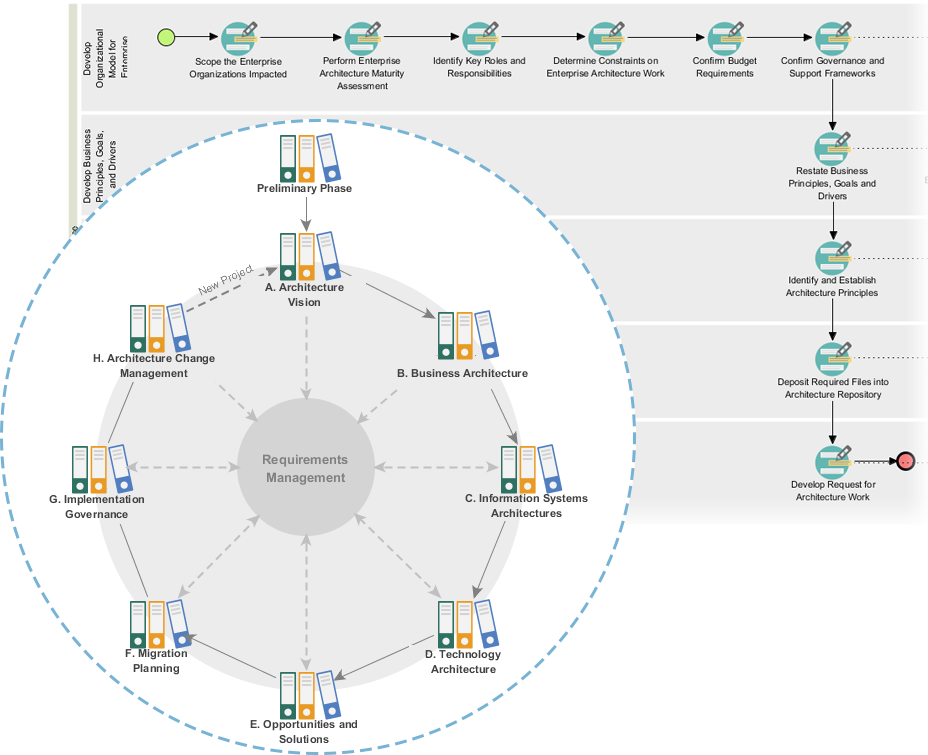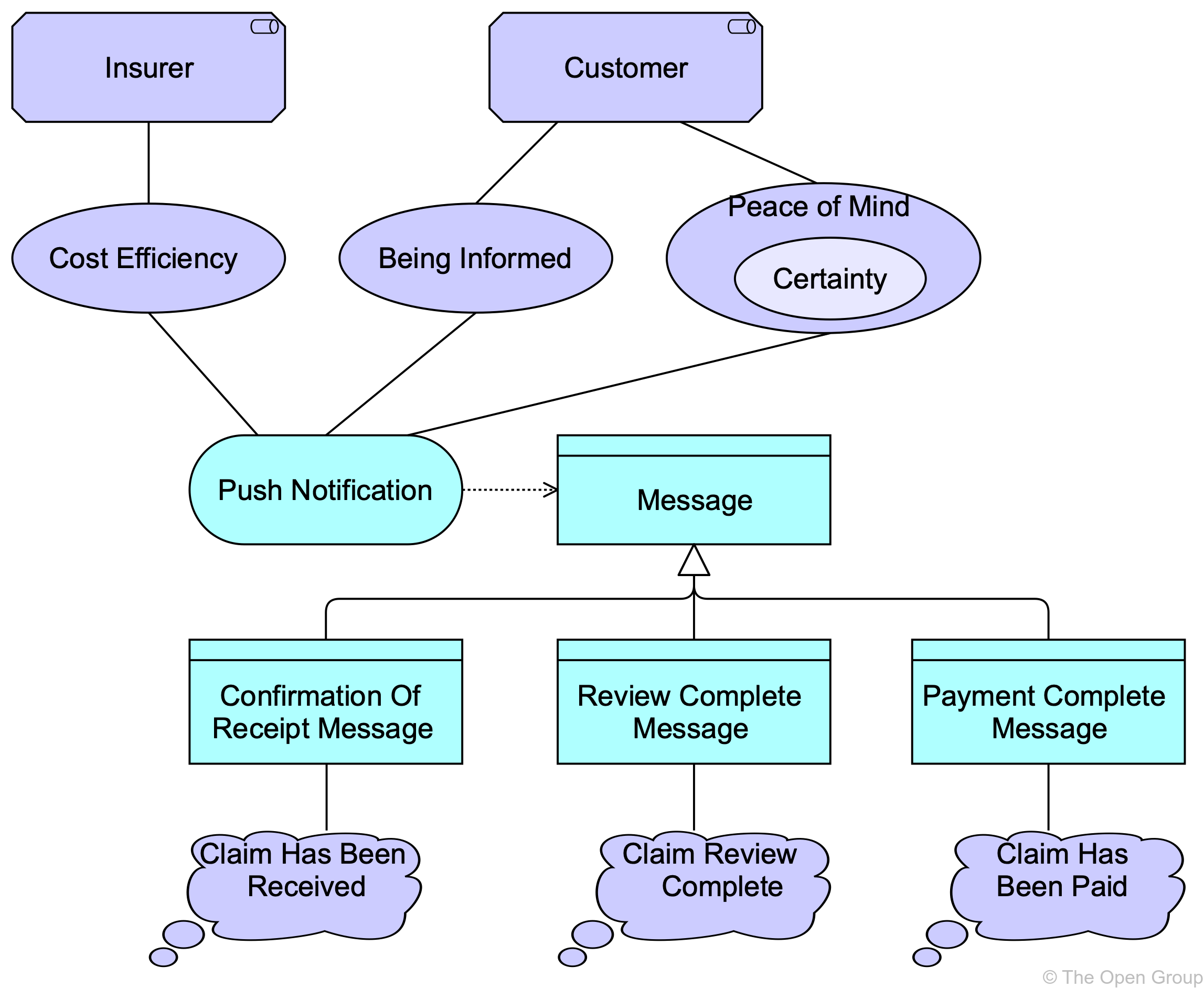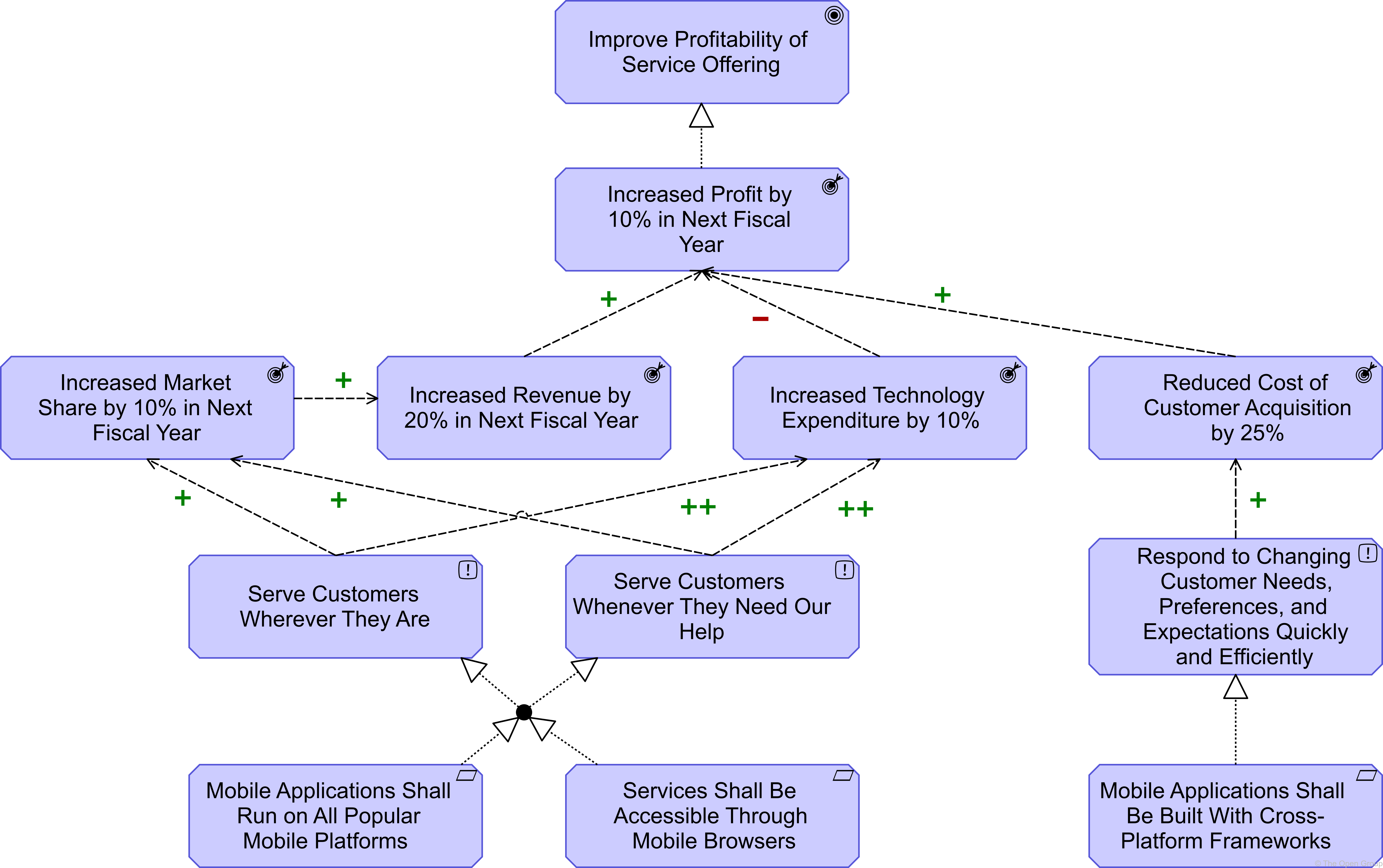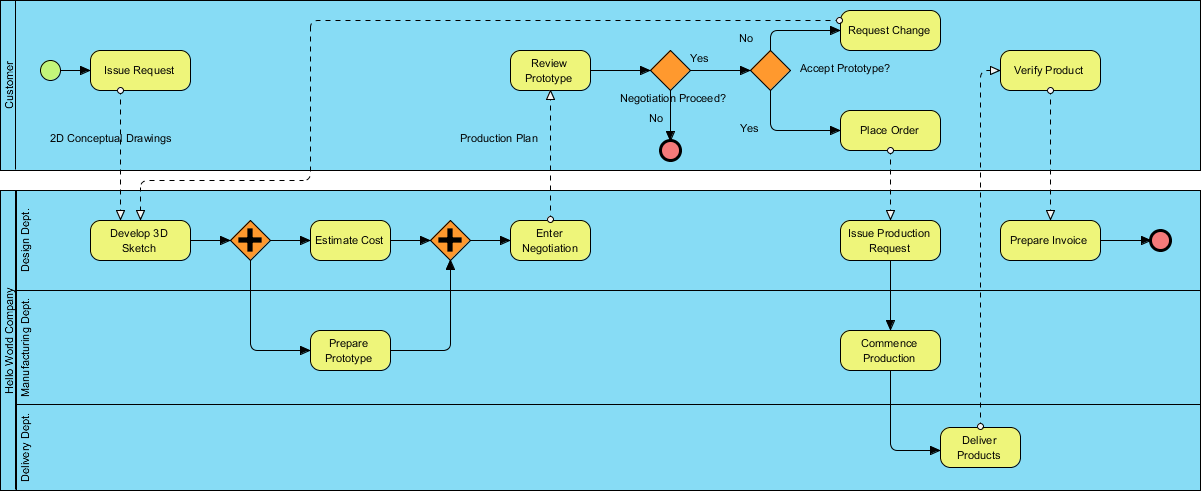Home » Archives for August 2024
In the ever-evolving business landscape, Enterprise Architecture (EA) teams grapple with constant changes while striving to align organizational goals. The Visual Paradigm TOGAF ADM Tool offers a solution to enhance your EA team’s productivity, efficiency, and effectiveness. In this article, we’ll explore the benefits of choosing Visual Paradigm and why it stands out from the competition. https://youtu.be/NHF1VftWTQk 1. Streamlining the ADM Process: Innovative Features Intuitive Interface: Visual Paradigm’s cutting-edge modeling tools allow your EA team to create TOGAF® ADM diagrams effortlessly. Say goodbye to cumbersome documentation and focus on strategic tasks. Actionable Guided Process: Ensure…
continue reading →
TOGAF (The Open Group Architecture Framework) is a widely-used enterprise architecture framework that provides a flexible and scalable approach to the design, planning, implementation, and governance of an enterprise. It is designed to help organizations effectively address the complex challenges of today's constantly changing business environment. TOGAF is a comprehensive framework that includes guidelines, best practices, and tools to support the design and implementation of enterprise architecture. It uses a series of phases, steps, and artifacts to help organizations systematically develop, manage, and implement enterprise architecture. The Zachman Framework for Enterprise Architecture is…
continue reading →
In the intricate world of enterprise architecture (EA), understanding and representing value is essential. Value encompasses usefulness, advantage, benefit, desirability, and gain for customers, stakeholders, or end-users. While monetary value is commonly expressed, non-monetary value—such as practical functionality, information, or knowledge—is equally vital to business success. Let’s delve into the concept of value and explore how to model it effectively within the ArchiMate framework. 1. What Is Value? Value represents the relative worth, utility, or importance of a concept. It can manifest in various ways: Selling a product Using a service Completing an activity While monetary…
continue reading →
In the intricate world of enterprise architecture (EA), understanding the motivation behind change is crucial. The ArchiMate Motivation View, also known as the Goals View, allows us to explore the WHY, WHOM, and WHAT of demand. Let’s delve into this powerful viewpoint and discover how it sheds light on the driving forces behind architectural decisions. 1. What Is the Motivation View? The Motivation View captures the reasons and drivers that guide changes in an enterprise architecture. It answers fundamental questions: WHY is this change needed? WHOM does it impact? WHAT are the goals and outcomes? When appropriate, it can also associate a Value to…
continue reading →
In the intricate world of enterprise architecture (EA), understanding the motivation behind change is crucial. The ArchiMate Motivation View, also known as the Goals View, allows us to explore the WHY, WHOM, and WHAT of demand. Let’s dive into this powerful viewpoint and discover how it sheds light on the driving forces behind architectural decisions. 1. What Is the Motivation View? The Motivation View captures the reasons and drivers that guide changes in an enterprise architecture. It answers fundamental questions: WHY is this change needed? WHOM does it impact? WHAT are the goals and outcomes? When appropriate, it can also associate a Value to…
continue reading →
In the dynamic landscape of enterprise architecture (EA), staying up-to-date with the latest standards and frameworks is crucial. ArchiMate, an open and independent modeling language, plays a pivotal role in describing, analyzing, and visualizing architecture across business domains. Let’s explore what’s new in the latest version, ArchiMate 3.0-3.2, and how it empowers organizations to communicate and design their architectures effectively. 1. The Essence of ArchiMate: ArchiMate provides a common language for describing: Business processes Organizational structures Information flows IT systems Technical infrastructure Stakeholders use ArchiMate to assess and communicate the consequences of decisions and changes within…
continue reading →
In today’s rapidly evolving landscape of enterprise IT, organizations face the critical challenge of managing complex systems, intricate processes, and organizational structures. To address this, two industry-leading frameworks have emerged as essential tools: ArchiMate and TOGAF. Understanding ArchiMate ArchiMate, developed by The Open Group, is a modeling language specifically designed for visualizing, describing, and analyzing enterprise architectures. It provides a standardized vocabulary and graphical notation to represent various aspects of an organization, including business processes, information systems, and technological infrastructure. ArchiMate’s strength lies in its ability to create a holistic view of an enterprise, enabling stakeholders…
continue reading →
Business Process Model and Notation (BPMN) has become the de facto standard for visualizing and documenting business processes. Developed by the Object Management Group (OMG), BPMN provides a rich set of graphical elements that allow business analysts, process engineers, and stakeholders to create clear and comprehensive process diagrams. Understanding the BPMN notation is crucial for effective business process modeling and improvement. In this article, we'll dive into the key BPMN notations and explore how they can be utilized to create meaningful process diagrams. Events: Events are the triggers or results of a process.…
continue reading →
Business Process Model and Notation (BPMN) is a widely adopted standard for modeling and documenting business processes. Developed by the Object Management Group (OMG), BPMN provides a common language and visual representation that enables organizations to capture, communicate, and optimize their business operations. At its core, BPMN is designed to bridge the gap between business and technical stakeholders, serving as a shared communication tool that facilitates the understanding and analysis of complex business processes. By using a standardized set of graphical elements, BPMN allows organizations to create detailed process diagrams that accurately depict…
continue reading →
-
Posted on August 1, 2024
-
/Under TOGAF
Embarking on an Enterprise Architecture (EA) project is a complex and multifaceted endeavor, often fraught with a myriad of challenges that can impede progress and undermine the overall success of the initiative. Before organizations can fully leverage the benefits of a robust EA framework like TOGAF, they must first overcome several critical barriers: High Upfront Investment: Implementing an EA program can be resource-intensive, requiring substantial upfront investments in training, tools, and additional personnel. This financial burden can be a significant deterrent for many organizations, especially those operating with limited budgets or tight timelines.…
continue reading →









